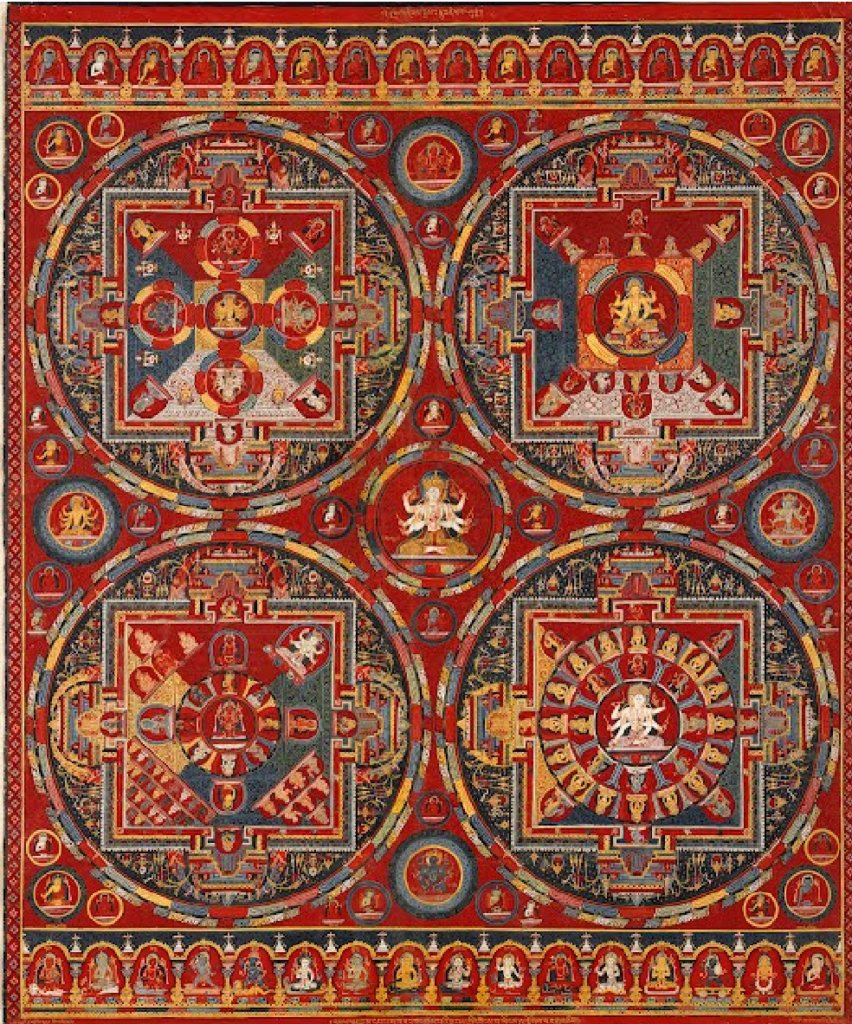
Title: Four Mandalas of the Vajravali Series
Creator: Unknown; Commissioned by Ngorchen Kunga Sangpo (1382-1456)
Date: c. 1429–56
Period:
Location: Central Tibet, Tsang (Ngor Monastery), Sakya order
Culture: Tibetan
Material: Painted Scrolls (Thangka, gouache on cotton)
Dimensions: 88.9 x 73.7 cm
Repository: Kimball Art Museum, Fort Worth, Texas
References: https://artsandculture.google.com/asset/four-mandalas-of-the-vajravali-series/qQErBDO0BtuQsQ; Kimball Art Museum: https://www.kimbellart.org/collection/ap-200001
Description: Four Mandalas of the Vajravali Series is a stunning thangka from the mid-Fifteenth Century. The mandalas are created as visual representations of the sacred places in which deities occupy. The art is created in tandem with the dynamic rituals and meditation customs of Vajrayana Buddhism. This painting in particular is significant in that it is comprised of four separate mandalas combined into one elaborate work that also portrays the five Pancharaksha Goddesses in the four cardinal directions in between the four main mandalas. The upper-left mandala depicts the goddesses popular for protecting against sickness and misfortune. The upper-right mandala shows the golden goddess of wealth and eighteen other deities. The lower-right mandala portrays the goddess of long life while the mandala on the lower-left is associated with protection from negative planetary influences. In each of the four mandalas, the deities are displayed in the four cardinal directions with more goddesses halfway between each of the four cardinal directions in a diagonal manner. Although the four mandalas display different symmetrical patterns, this basic design of 8 seated-deities in the four cardinal directions with 4 in between those directions remains.